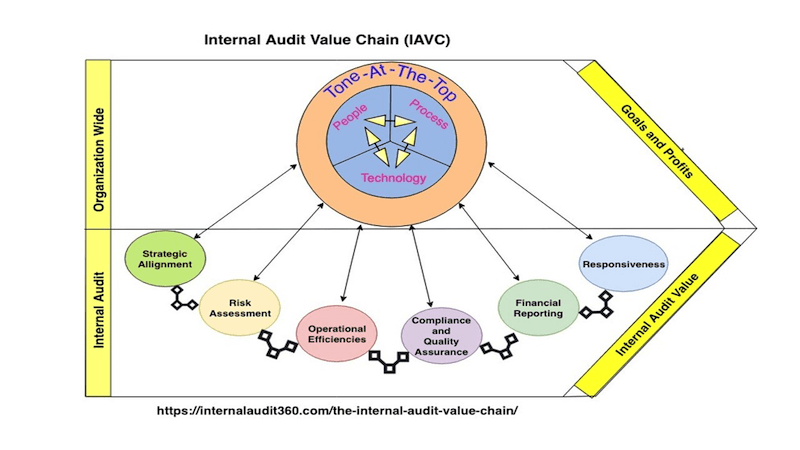
It’s been well established that internal audit must seek to add value if it is to prove its worth in the organization. In the first article in this series, “Many Internal Audit Failures Stem from Misalignment with the Company Strategy,” I defined the Internal Audit Value Chain (IAVC) and its key components. The IAVC includes “enterprise-wide initiatives impacting functional areas across every organization, involving a combination of people,processes, technology, and ‘tone at the top’ to drive the accomplishment of goals and improve profitability.”
Internal audit’s role in the value chain requires understanding the organization’s: (1) strategic direction, (2) risk management and monitoring, (3) operational efficiencies, (4) quality and compliance, (5) financial reporting, and (6) responsiveness to customer and regulatory needs to create value.
This series includes six articles, which will be added here as they become available.
Part one: Strategic Direction
Many Internal Audit Failures Stem from Misalignment with the Company Strategy
Part two: Risk Management and Monitoring
Eight Steps Internal Audit Should Take to Aid Risk Management
Part three: Operational Efficiencies
How Internal Audit Can Add Value by Pursuing Efficiencies
Part four: Quality and Compliance
How Internal Audit Can Boost Quality and Compliance
Part five: Financial Management
What Internal Audit Can Do to Improve Financial Management
For more information on the Internal Audit Value Chain, contact:
Jonathan Ngah, CISA, CIA, CFE, CGFM, is a principal at Synergy Integration Advisors, a consulting firm providing Audit, Governance Risk and Compliance (GRC) solutions to Federal Government Agencies,private-sector, and not-for-profit organizations.


